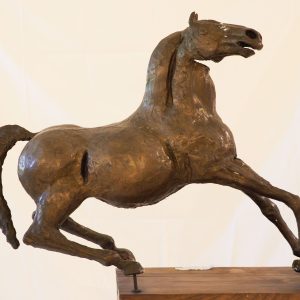Il dipinto è testimonianza del lungo e intenso rapporto fra il pittore e Raffaele de Grada, documento di solida amicizia e di intesa culturale.
Nel libro di de Grada Il movimento di “Corrente”, Edizioni del Milione, Milano, 1952, la ricostruzione fedele di quel periodo; a Cassinari, «una delle energie più valide del mondo artistico contemporaneo», dedicata una pagina che tocca i caratteri fondamentali del suo lavoro: «Questa passione del rappresentare l’immagine della natura che il gusto o la storia ci offre, senza escludere che in tempi pur vicini il gusto e la storia potevano essere ben differenti, Cassinari se l’è portata dalle colline di Piacenza, da Gropparello dove il nostro pittore ha incominciato a impastare i colori. Alla sua terra Cassinari ha conservato una fondamentale fedeltà, anche se ne è coscientemente evaso in vista di Milano, dell’Europa, del Mondo […]. Cassinari trovava il “suo” modo di essere vivo e moderno al di fuori degli impianti intellettuali, per forza di passione. Non si affaticava a ricercare strutture nuove, ma tutto si affidava al “suo” segno e al “suo” colore […]. Ha arricchito il colore, ha complicato il segno.»
Luigi Cavallo
Storia
La natura dipinta. Paesaggio, realtà e memoria, a cura di L. Cavallo, Fortunagoinarte, Auditorium Giovanni Azzaretti, Comune di Fortunago, 10 luglio-11 settembre 2022
The sun in the woods
Bruno Cassinari
BRUNO CASSINARI (1912-1992)
The sun in the woods (1990)
Oil on canvas, cm 79,7×89,5
Signed “Cassinari” down on the right
On the back: purple pastel «1940-1990 / Raffaellino – Bruno / Golden wedding»; green pastel «“The sun in the wood” / Cassinari 1990».
Private collection
The painting shows the long and intense relationship between the painter and Raffaele de Grada, a document of solid friendship and cultural understanding.
In de Grada’s book Il movimento di “Corrente”, Edizioni del Milione, Milan, 1952, there is a faithful reconstruction of that period; a page is dedicated to Cassinari, “one of the most valid energies of the contemporary art world”, which touches on the fundamental characteristics of his work: “This passion of representing the image of nature that taste or history offers us, without excluding that in times, however close, taste and history could have been quite different, Cassinari brought it from the hills of Piacenza, from Gropparello where our painter began to mix colours. To his land Cassinari maintained a fundamental loyalty, even if he consciously escaped from it in view of Milan, Europe, the World […]. Cassinari found ‘his’ way of being alive and modern outside intellectual frameworks, by force of passion. He did not toil to seek new structures, but everything relied on ‘his’ sign and ‘his’ colour […]. He enriched the colour, he complicated the sign.”
Luigi Cavallo
History
La natura dipinta. Paesaggio, realtà e memoria, a cura di L. Cavallo, Fortunagoinarte, Auditorium Giovanni Azzaretti, Comune di Fortunago, 10 luglio-11 settembre 2022

